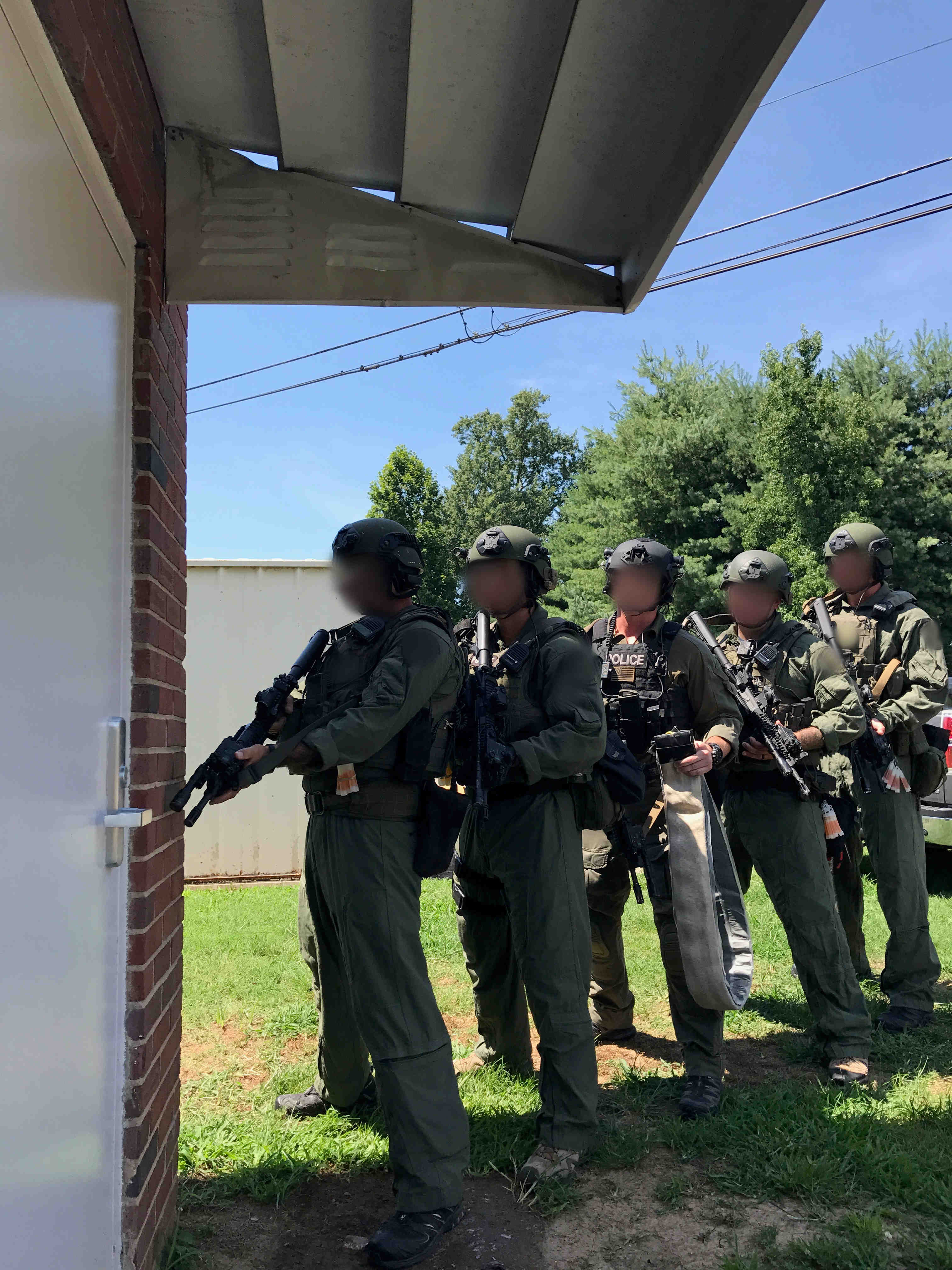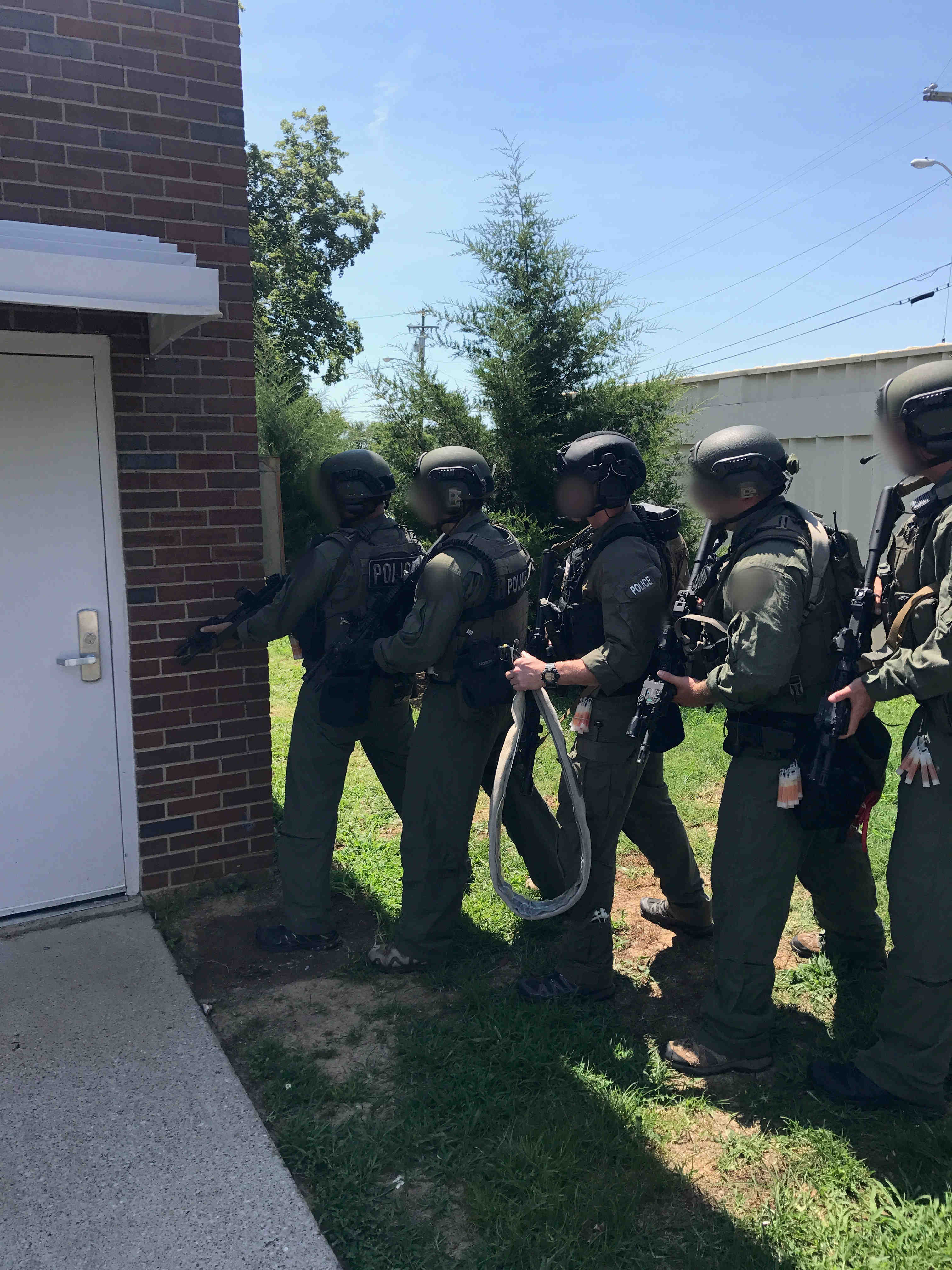Police Officer Response
Although students and faculty can take measures against an active shooter, the most important aspect remains the police response.
Types of First Responders to School Shootings
Different types of officers who would respond to an active shooter situation are normal Patrol Officers, School Resource Officers (SROs), Special Response Tactical units (SRT), and full-time Special Weapons And Tactics (SWAT) teams.
Patrol Officers are the average black and white, uniformed police officers. They are usually seen driving around town in squad cars and responding to incidents as needed. They will be clearly identifiable by their uniform and will most likely be armed with either a handgun or a shotgun of some kind.
SROs are sworn law enforcement officers responsible for safety and crime prevention in schools. In addition to normal police duties, SROs are responsible for mentoring and counseling students. If a school has one, they will most likely be the first to respond to these situations as they are already on site, armed and ready.
SRT units are special units trained for high-risk situations who are not actually supposed to look like normal officers. Some have beards and different hairstyles as they are allowed different grooming standards, and often wear plain clothes. The goal of SRT officers is to blend in with the average population. This could make them hard to differentiate for a student in an active shooter situation, but they still may be the first unit that responds. Because of this, they are trained to make it clear they are police when they enter a building. Students should listen for this instruction and should not attack them. The images below show SRT training and examples of what they may look like moving into a building.
Figure 2: SRT training

Figure 3: SRT training

Figure 4: SRT training

S.W.A.T. teams are police units trained in military tactics, usually made up of normal officers, rather than SRT. They are not full-time and will usually wear a uniform of some kind. They are typically seen with military gear including body armor, camouflage, and assault rifles. SWAT teams are deployed in the most extreme situations.
Response Tactics
The standard protocol of police response is for all available officers to go towards the school. In the past, standard protocol was to wait for SWAT to arrive, but current practices dictate that any officer go in to confront the shooter. When backup arrives, the standard practice is to go in pairs and engage while looking for cover and concealment. Tactics involve formations ranging between pairs, wedges, and diamonds. The objective is to secure areas to contain the shooter, after which he can be more easily stopped. The biggest difference between SROs and normal officers is proximity. Because they are in the same building, SROs can respond directly to the threat. As there is normally only one per school and they have less equipment than other units, they are limited in tactical capability. SRO’s largest advantage over other officers is proximity, as they are down the hall rather than across town. This means response time is much lower, and threats are often neutralized before other officers arrive. SRT and SWAT teams employ military tactics, including formations such as wedge, diamond, and flying V. According to the interview with the SRT officer, the response time of ordinary police officers is between 4 and 6 minutes, but varies depending on many factors.
Differentiating Between Shooters, police officers and Civilians
Officers are trained to differentiate between shooters and civilians. Some basic things the police look for are guns, cooperation, hands, and body language. Officers will command students to show him their hands to make sure they don’t have weapons. If students cooperate with this command, they are identified as safe. In general, officers look for cooperation with commands, as a shooter would try to evade.
Just as it may be difficult to differentiate between a shooter and a normal student, because of their grooming standards and the clothes they may wear, it may be hard for a student to differentiate between a shooter and an SRT responder. If you see someone coming in with a weapon and tactical apparel, as a student, you should try to avoid confrontation if at all possible. But, as there are some situations in which you must defend yourself, you must be absolutely sure that the person is not a police officer before you try to attack, take their weapon and stop them. If you run at a police officer, it will make it nearly impossible for them to know what your intentions are and they will have to act. Being heroic may seem like a good idea, but you take on a large responsibility when you do so. So as intense as a situation may be, the best option is to hide and avoid the confrontation.
Connect with Vanderbilt
©2025 Vanderbilt University ·
Site Development: University Web Communications